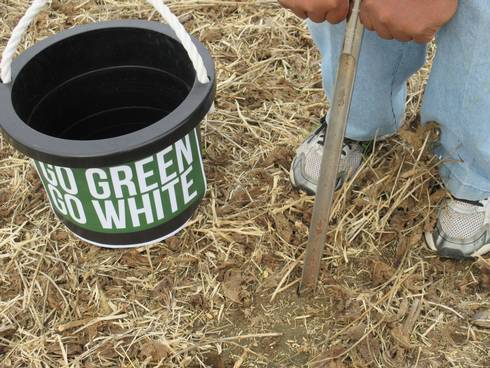Oct 5, 2018Why soil test in the fall compared to spring?
Soil testing is a best practice recommended by Michigan State University Extension to achieve the desired agronomic, economic and environmental outcomes from fertilizer practices. Timing wise, there are several reasons to soil test in the fall compared to spring.
There is more time available in the fall to collect soil samples and make fertilizer decisions compared to spring. Based on the soil analysis, fall season allows additional time to think about upcoming management decisions. Farmers usually apply phosphorus (P) and potassium (K) fertilizer in the fall when there is more time and equipment available and soil compaction is less of a concern. This simplifies spring operations and streamlines planting.
On soils with optimum fertility levels, field research has shown that fall applications of P and K would be equally effective compared to a spring application prior to corn and soybean planting. For winter wheat, all the P and K requirements are best applied at fall planting.
Also, dry fertilizers can be safely and quickly applied in the fall. Some tillage will help ensure nutrients are placed below the soil surface. This will help reduce stratification and lower the concentration of dissolved P in the runoff water.
Weather conditions typically are more favorable for collecting soil samples as compared to spring. Michigan’s unpredictable spring weather conditions can force postponement or even abandonment of soil testing for that year.
Fall offers the best opportunity to apply lime as it provides more time to neutralize soil acidity. The soil test results should indicate the soil pH and if lime is needed to rectify excess acidity. Long-term experiments in Michigan have shown that liming will improve nutrient availability and generate a good return for investment.
Based on the soil test results, fertilizer can be purchased prior to the end of the year.Fertilizer is often cheaper in the fall compared to spring, when demand is high. Purchasing fertilizer prior to the end of this year could potentially have favorable tax implications.
Soil testing laboratories are less busy. Generally, soil testing laboratories as busier in the spring compared to fall, as a majority of farmers, gardeners and homeowners wait until spring to soil test. Therefore, the turnaround time in the spring is much longer. A longer wait for soil testing results may force delays in fertilizer timing.
There are several good quality labs available to Michigan farmers, including the MSU Soil and Plant Nutrient Laboratory. Details on submission, interpretation, fee schedule and more can be found by visiting the MSU Soil and Plant Nutrient Laboratory website. MSU Extension educators are available to assist people learn more about utilizing the soil test data to their best advantage.
Photo: There are several advantages to test your soil in the fall. Photo: George Silva/MSU Extension.















